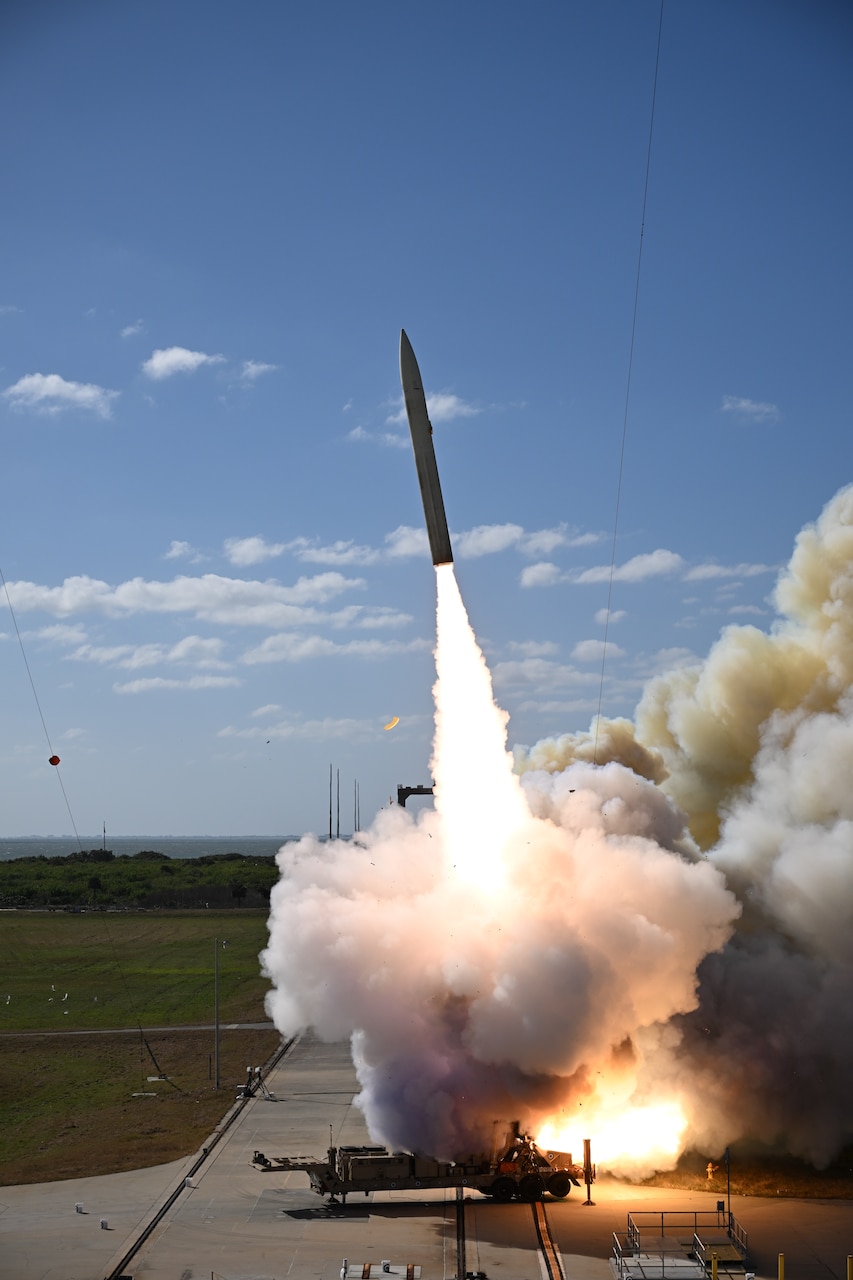The US Army, in collaboration with the US Navy, has achieved a major milestone with the successful test-fire of its Long-Range Hypersonic Weapon (LRHW), also known as Dark Eagle.
This test, conducted on December 12 from Cape Canaveral Space Force Station in Florida, marks the culmination of over two years of effort to deploy the weapon from its trailer-based launcher.
According to Army Secretary Christine Wormuth, the successful test builds on previous flights demonstrating the Common Hypersonic Glide Body’s ability to reach hypersonic speeds at target distances.
This test was the second successful end-to-end flight of the weapon’s All Up Round (AUR) this year. It also marked the first live-fire event for the LRHW system, which utilized a Battery Operations Center and a Transporter Erector Launcher.
The LRHW is a key component of the Pentagon’s broader hypersonic missile development program, with the missile itself also set to arm the US Navy’s Zumwalt-class stealth destroyers and future Block V Virginia-class submarines.

Secretary of the Navy Carlos Del Toro said, “This test marks an important milestone in the development of one of our most advanced weapons systems. As we approach the first delivery of this capability to our Army partners, we will continue to press forward to integrate Conventional Prompt Strike into our Navy surface and subsurface ships to help ensure we remain the world’s preeminent fighting force.”
The test launch, which took place at midday from Launch Complex 46, generated considerable attention on social media. Missile enthusiasts and photographers shared images of the launch, while local residents expressed surprise upon witnessing the liftoff.
Online flight tracking data shared by OSINT accounts revealed that the operation was closely observed by several specialized aircraft.
Among them were NASA’s WB-57 and the Missile Defense Agency’s N551HA and NP-3D BLOODHOUND341, which frequently support missile testing and research missions. These aircraft play an important role in gathering essential observational data to validate the test’s success.
The test flight came just weeks after Russia deployed its new Oreshnik hypersonic ballistic missile, targeting the Ukrainian city of Dnipro.
On December 11, reports indicated that Russia could conduct another Oreshnik launch in the coming days, with a former Russian diplomat warning that Moscow might use the missile as a signal to the United States.
Dark Eagle Hypersonic Missile Hits Milestone Amid Challenges
Developed by Lockheed Martin and Northrop Grumman, Dark Eagle features a two-stage rocket booster designed to carry the Navy’s Common Hypersonic Glide Body (C-HGB) to speeds exceeding Mach 5 before separating and gliding toward its target at hypersonic speeds.
Once the C-HGB separates from its booster, it glides at high speed toward its target, a combination of speed and maneuverability that renders interception nearly impossible with current air defense systems.
The missile is designed to defeat advanced “anti-access/area denial capabilities,” a key aspect of China’s defensive strategy in the Pacific, according to the Congressional Research Service.
With a range of 1,725 miles, Dark Eagle is intended to bypass long-range weapon systems that could otherwise prevent US forces from operating freely in contested regions like the South China Sea.
Dark Eagle’s underlying technology is the basis for the Navy’s Intermediate-Range Conventional Prompt Strike (IRCPS), which will be deployed on the Navy’s Zumwalt-class stealth destroyers.
However, the road to this successful test has been far from smooth. The Army has faced several technical challenges that have delayed the missile’s development.
In 2023, the Army canceled three planned Dark Eagle flight tests that were scheduled for March, September, and October. DoD officials confirmed that these launches did not take place.
However, a successful end-to-end test was carried out in June 2024, but it involved a different launch platform, not the truck-mounted system that will be used in combat.
The primary cause of delays has been problems with the launcher and support systems, with the Army attributing most of the setbacks to the launch platform supplied by Lockheed Martin.
These challenges echo the difficulties faced by the US Air Force with its own hypersonic program, the AGM-183A ARRW, which has also been plagued by testing delays.

Despite these earlier setbacks, the Army hopes to press ahead with plans to deploy its first Long-Range Hypersonic Weapon (LRHW) battery by fiscal year 2025, although the exact timeline remains uncertain.
The successful test of Dark Eagle comes at a time when global competitors are making huge progress in developing hypersonic weapons.
China has already deployed the DF-ZF hypersonic glide vehicle, carried by the DF-17 ballistic missile and designed for anti-ship missions. Russia, meanwhile, has placed its nuclear-capable Avangard hypersonic glide vehicle into service, launched atop its RS-28 Sarmat intercontinental ballistic missile.
- Contact the author at ashishmichel(at)gmail.com
- Follow EurAsian Times on Google News




